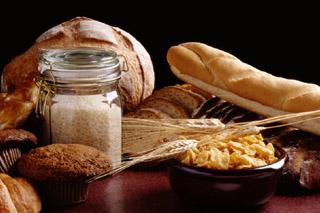Latest Briefing for 2012

Dietary Fibre and Satiety
Obesity is a major public health issue with current trends leading to estimated UK incidence in 60% of men, 50% of women and 25% of children by 2050. It has a severe impact on people’s health, increasing the risk of type 2 diabetes, some cancers, and heart and liver disease. The direct cost to the NHS is estimated to be over £4 billion per year, and decreasing the incidence of obesity is therefore a priority for Government. Obesity results from a sustained excess net energy intake. The western diet of tasty, energy dense, high fat, high sugar foods appears to have reduced impact on the gastrointestinal signals that help promote feelings of satiety and fullness, leading to widespread overconsumption. Increasing the inclusion of dietary ingredients with enhanced effects on satiety may therefore provide an effective strategy to decrease energy intake, improve healthy body weight regulation and reduce incidence of obesity.
One such natural dietary macronutrient with enhanced satiating properties is dietary fibre. However there are many types of dietary fibre, with rigorous on-going debate as to its precise definition, and attempts in the scientific literature to quantify its effects on satiety in human subjects are equivocal. “Dietary fibre” comprises a myriad of complex carbohydrates that are indigestible by mammalian gut enzymes. They pass through to the large intestine where those that are soluble are broken down (fermented) by the resident gut microorganisms whereas those that are insoluble remain intact. Insoluble dietary fibre provides the physical bulk to gut contents that aids laxation. However, further knowledge is needed of the consequences of soluble dietary fibre and its fermentation products on gut physiology and hormone secretion.
Satiety (feeling full after consumption of food) is critical since it determines the cessation of feeding and delays and/or reduces consumption at the next meal, thereby limiting overall caloric intake. This is achieved in part by the presence of food in the gut stimulating specialised enteroendocrine cells in the gut wall to secrete “gut satiety hormones” which then signal to feeding centres in the brain. Some successful current pharmacological approaches to appetite (and obesity) suppression involve exogenous administration of gut satiety hormones or their mimetics. However, encouraging enhanced endogenous gut satiety hormone secretion through appropriate macronutrient composition of the diet offers a potentially more sustainable, natural physiological approach. Indeed the ability to eat until satiated without overconsumption of calories is clearly an attractive proposition.
However, an increased understanding of the interactions between dietary fibre and gut satiety hormone signalling is required before we can offer properly informed nutritional advice on inclusion of dietary fibre for appetite suppression and healthy weight management.
Read morePublished on 13 November 2012 in Food, health and wellbeing
Briefings for 2012
Ovine chlamydiosis - the most common infectious cause of prenatal lamb death in the UK
Ovine Enzootic Abortion (OEA) is one of the major infectious causes of abortion in sheep and goats worldwide, and the most common cause in the UK. Read more
Published on 22 October 2012 in Sustainability and Communities , Food, health and wellbeing
Parachlamydia - an emerging potential cause of abortion in cattle in the UK
Reproductive failure in cattle is a major concern to livestock producers worldwide. An emerging group of bacteria known as Chlamydia-like organisms have been associated with cases of bovine abortion, as well as with human respiratory and reproductive infections. Read more
Published on 9 October 2012 in Sustainability and Communities , Food, health and wellbeing
Diet, phytochemicals and age-related diseases
Ageing is associated with reduced insulin sensitivity, increased inflammation and reduced ability to respond to metabolic stress. Read more
Published on 25 September 2012 in Food, health and wellbeing
Sustainability-oriented innovation for competitive advantage: Does the business environment matter?
Sustainability-oriented innovation within firms, such as the development of eco-friendly production methods, is seen as a route for product differentiation, value creation and as a way for firms to enhance their bargaining power within the supply chain. Read more
Published on 11 September 2012 in Sustainability and Communities , Ecosystems and biodiversity
Evidence of pain in broiler chickens
The gait or walking style of meat (broiler) chickens differs from that of laying hens. The aim of this study was to determine the extent to which pain, as opposed to say conformation, was associated with or influenced walking style in broilers of gait score 3 (i. Read more
Published on 30 August 2012 in Food, health and wellbeing
Neosporosis - A major cause of abortion in cattle
Neosporosis - a major cause of reproductive failure in cattle . Read more
Published on 13 August 2012 in Food, health and wellbeing
Obesity and Colon Cancer
Rising obesity levels are set to increase cancer risk in the future. This may be caused by the foods and lifestyle factors that lead to obesity, such as consumption of high levels of dietary fat and a sedentary lifestyle. Read more
Published on 8 August 2012 in Food, health and wellbeing
Long-Term Land Use Change on the Machair and its Impact on Biodiversity
Machair is a distinctive type of coastal grassland restricted to about 25,000 ha in world-wide extent; 17,500 ha of this resource are in Scotland. Read more
Published on 3 May 2012 in Sustainability and Communities , Ecosystems and biodiversity
Bracken and the Asulam ban
Bracken is well known as an agricultural, ecological and health problem with little in the way of redeeming features. Read more
Published on 2 May 2012 in Sustainability and Communities , Ecosystems and biodiversity
KE of science - changing behaviours that challenge society
Society today faces a number of challenges, such as climate change, that require individuals to collectively change their behaviour in ways that incur additional costs (financial and/or non-financial). Read more
Published on 25 April 2012 in Sustainability and Communities







